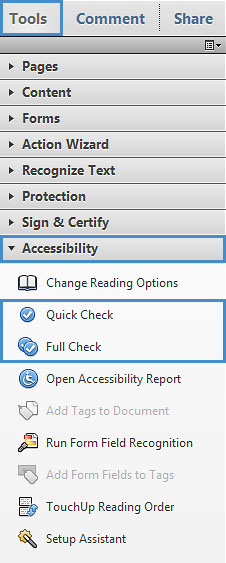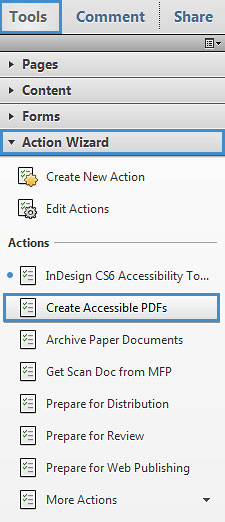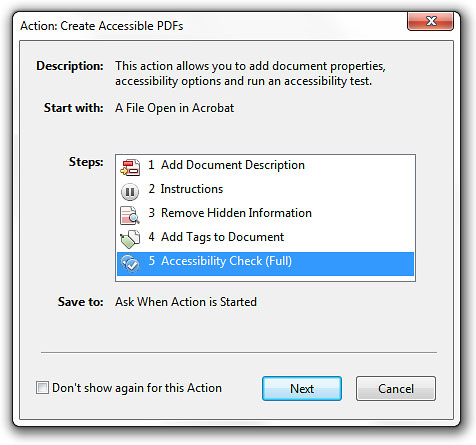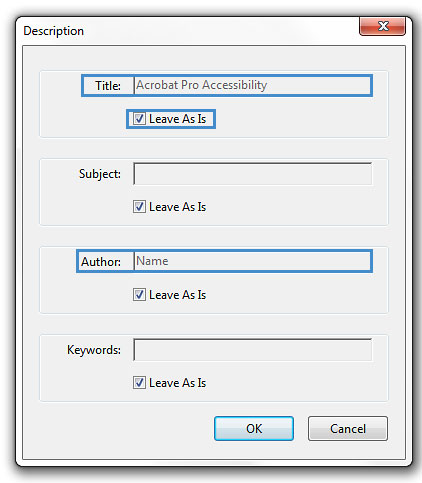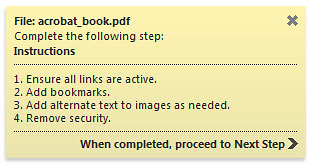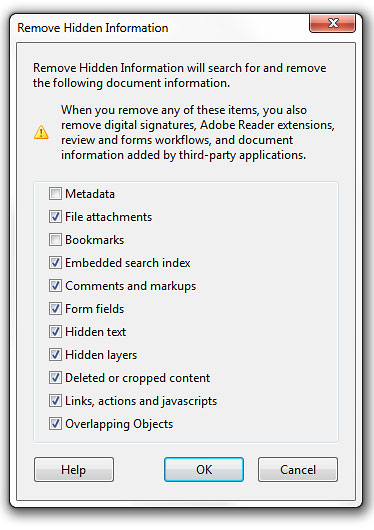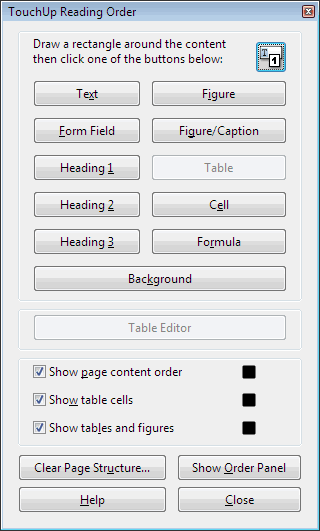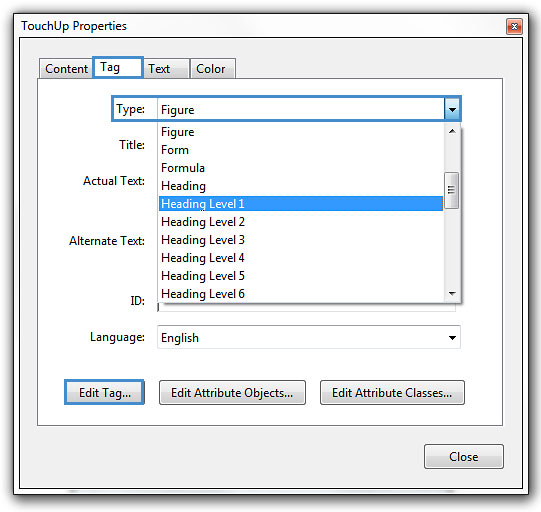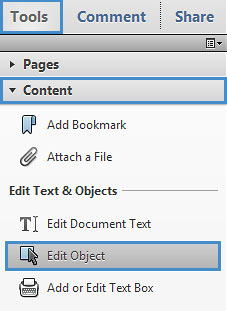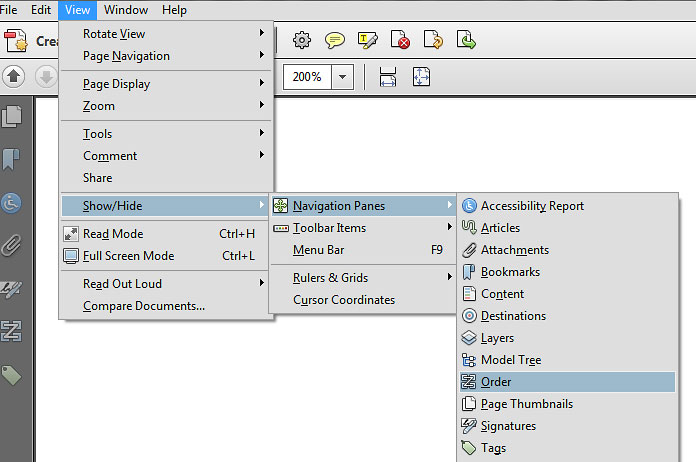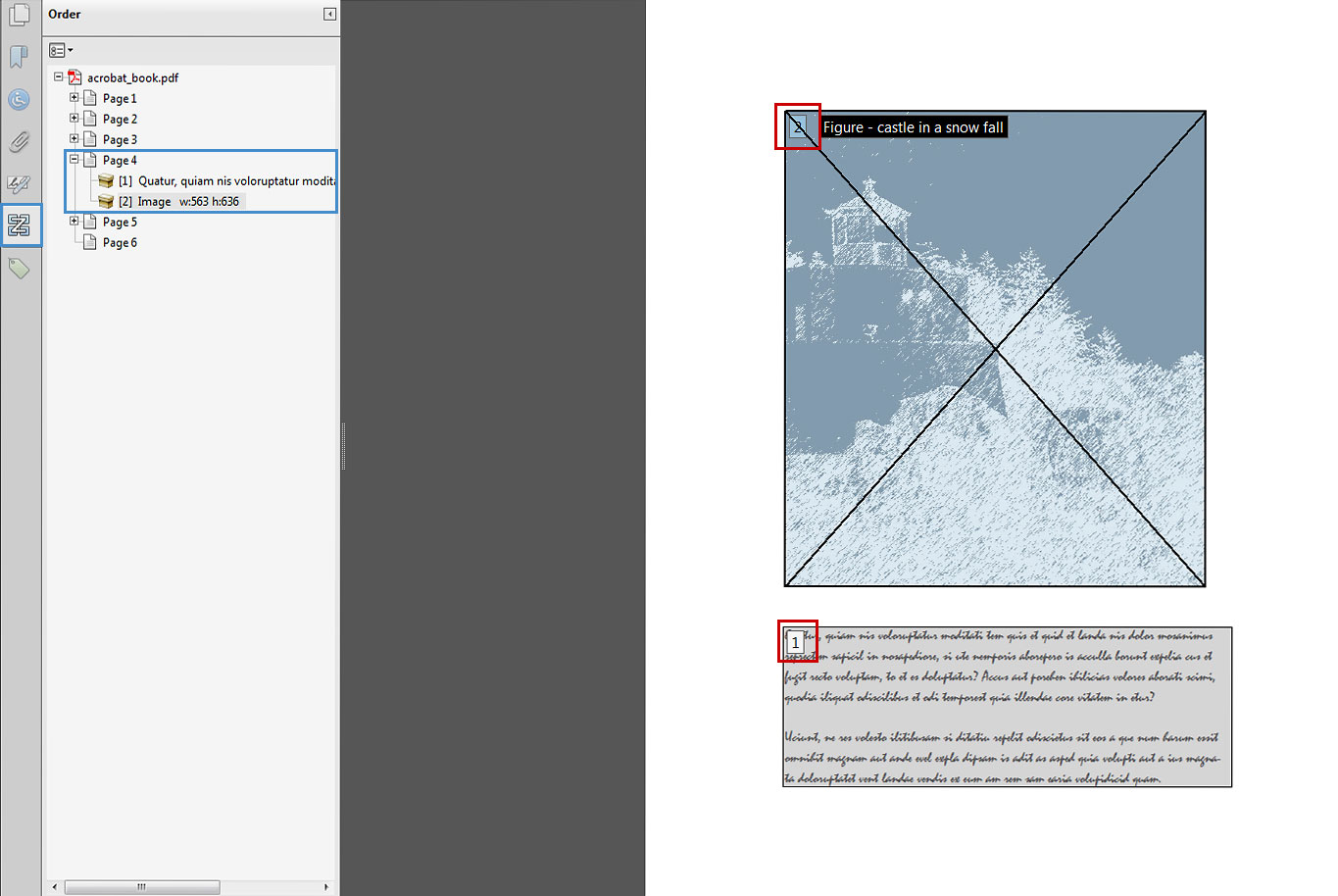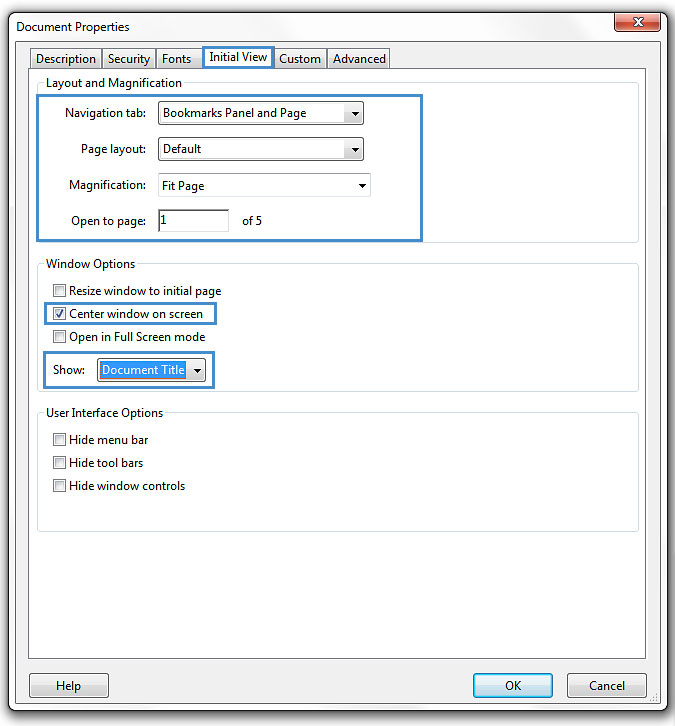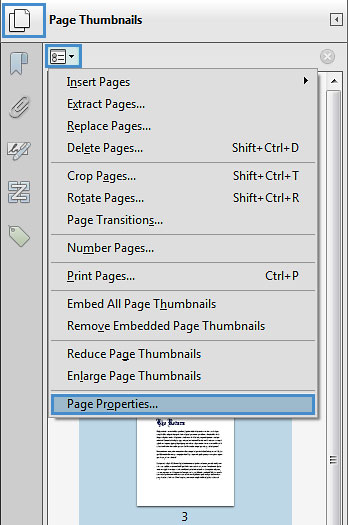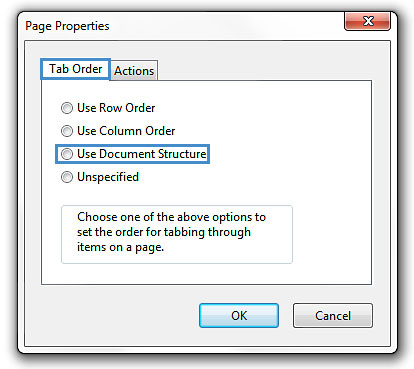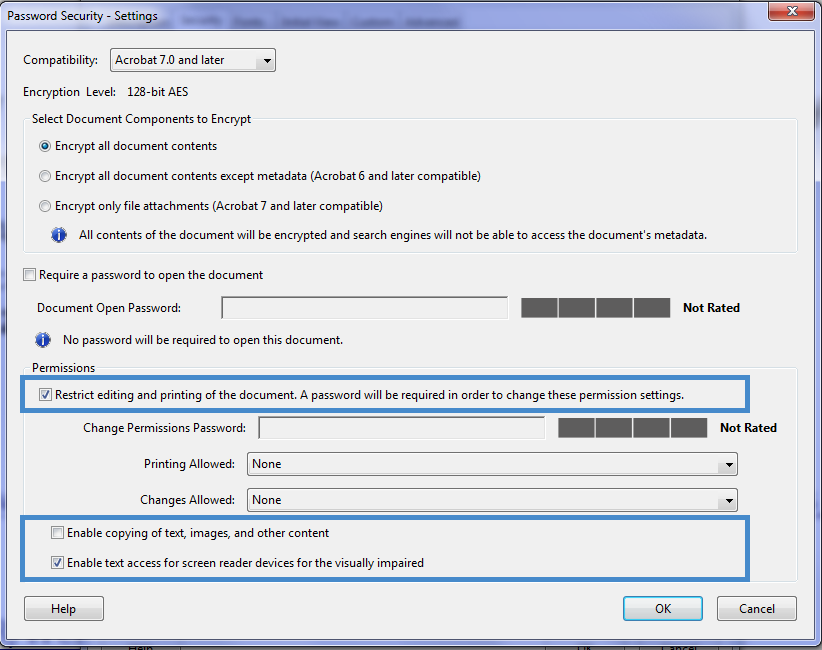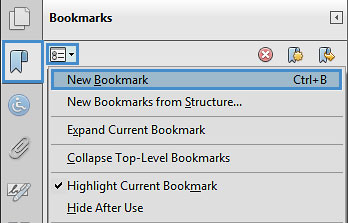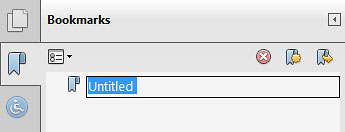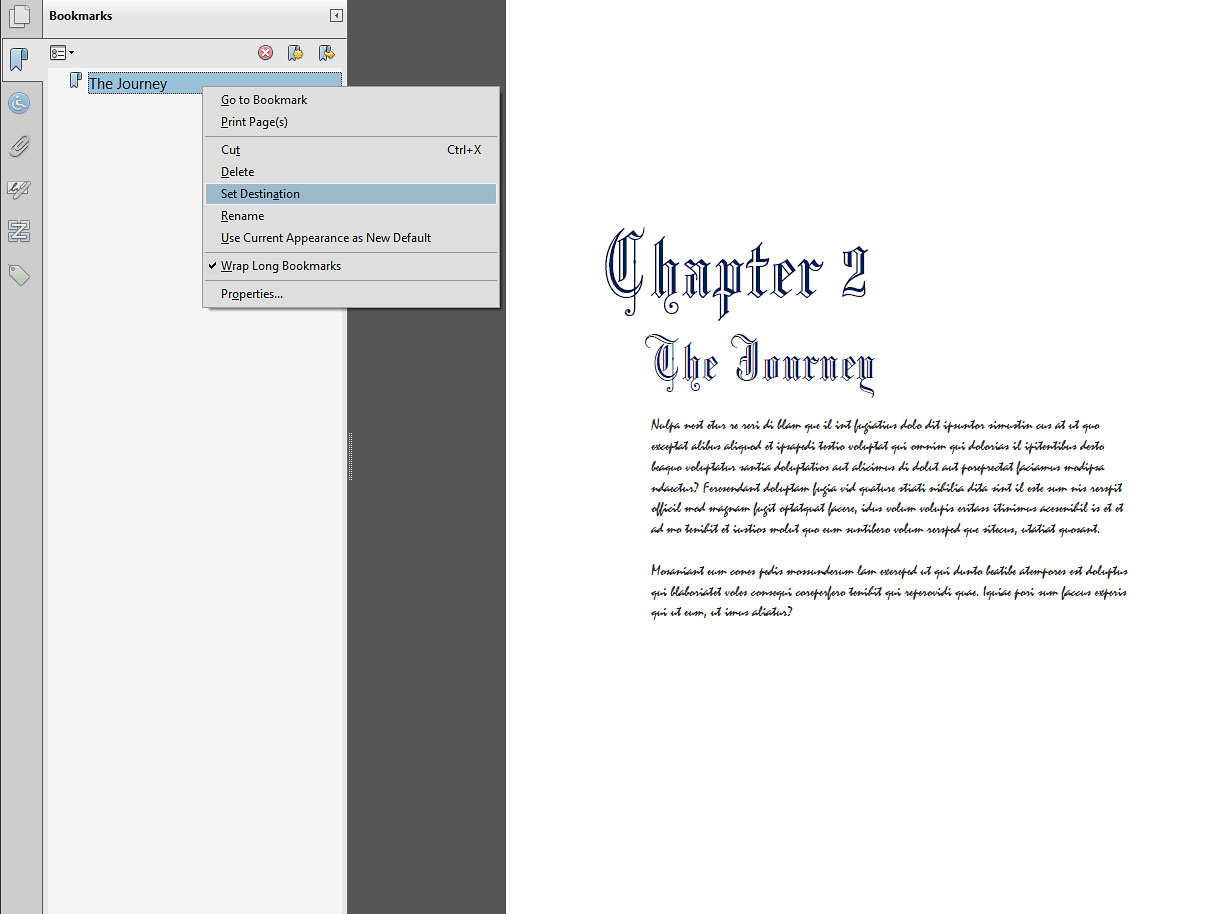Note: While PDF accessibility has improved over the years, accessibility support for PDF by authoring tools, viewers, and assistive technologies (e.g., screen readers) is not as widespread as for HTML documents. We recommend considering HTML instead of or in addition to PDF where appropriate.
Should I use ADOD or WCAG 2.0?
These techniques can help you to use Acrobat 10 Pro to create documents that are:
- Intended to be used by people (i.e. not computer code),
- Text-based (i.e., not simply images, although they may contain images),
- Fully printable (i.e., where dynamic features are limited to automatic page numbering, table of contents, etc. and do not include audio, video, or embedded interactivity),
- Self-contained (i.e., without hyperlinks to other documents, unlike web content), and
- Typical of office-style workflows (Reports, letters, memos, budgets, presentations, etc.).
Note: If you are creating forms, web pages, applications, or other dynamic and/or interactive content, these you should also consult the W3C-WAI Web Content Accessibility Guidelines (WCAG 2.0). The WCAG working group has provided PDF Techniques for WCAG 2.0.
File Formats
The default file format for Acrobat 10 Pro is Adobe Portable Document Format (PDF). In addition, Acrobat 10 Pro offers several other word processor and web format saving options. These have not been checked for accessibility.
Document Conventions
We have tried to write these techniques so that they are useful to all authors, regardless of whether they use a mouse. However, for clarity there are several instances where mouse-only language is used. Below are the mouse-only terms and their keyboard alternatives:
- *Right-click: To right-click with the keyboard, select the object using the Shift+Arrow keys and then press either (1) the “Right-Click” key (some keyboard have this to the right of the spacebar) or (2) Shift+F10.
- *Drag: Unfortunately, there is no keyboard alternative for several operations that require dragging.
Disclaimer and Testing Details:
- Following these techniques will increase the accessibility of your documents, but it does not guarantee accessibility to any specific disability groups. In cases where more certainty is required, it is recommended that you test the office documents with end users with disabilities, including screen reader users.
- The application-specific steps and screenshots in this document were created using Adobe Acrobat 10 Pro (ver.10.0, Windows 7, Mar. 2011) while creating a PDF document.
- Tasks completed in Technique 3, Technique 4, and Technique 5 cannot be undone. It is recommended that you save your PDF document before and after you make significant changes.
- This document is provided for information purposes only and is neither a recommendation nor a guarantee of results.
- If errors are found, please report them to: adod-comments@idrc.ocad.ca

